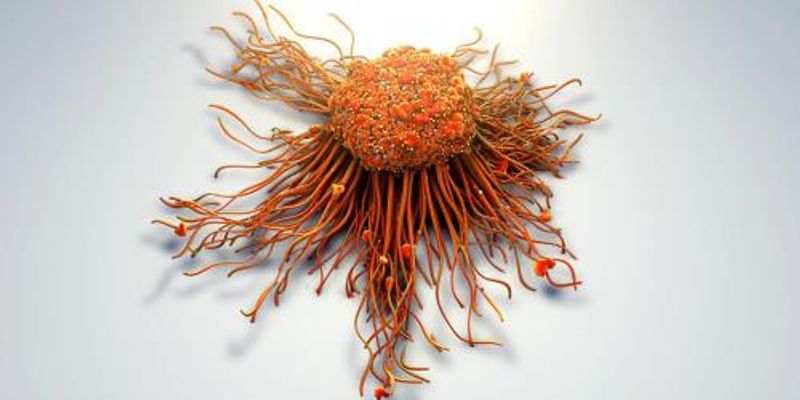Cancer Cell
Cancer Cell: is a cell that can divide relentlessly, forming solid tumors or flooding the blood with abnormal cells. Cell division is a normal process used by the body for growth and repair.
-
Facioscapulohumeral muscular dystrophy (FSHD), one of the most common forms of progressive muscular dystrophies and is often conventionally diagnosed by Southern blot analysis. The accurate d...Speaker: Alka Chaubey, PhD, FACMG
NOV 13, 2019 | 12:00 PM
DATE: November 13, 2019TIME: 12:00pm PT NK cells play a major role in immune surveillance and in the early immune response to cancer and infections. Beneficial anti-tumor respo...
NOV 12, 2019 | 10:00 AM
DATE: November 12, 2019TIME: 10:00am PSTDirect measurement of copy number by droplet-based shallow sequencing of genomic DNA has the potential to provide new insights into tumor heterog...
NOV 07, 2019 | 10:00 AM
DATE: November 7, 2019TIME: 10:00am PST, 1:00pm EST Studying the pathogenesis of diabetes requires detailed analysis of the pancreatic islet microenvironment and its numerous c...
NOV 07, 2019 | 9:00 AM
DATE: November 7, 2019 TIME: 9:00am PST, 12:00pm EST In collaboration with Hematherix and Thermo Fisher, Dr. Laurent Mosnier is investigating a new treatment for acute traumatic bl...
OCT 31, 2019 | 9:00 AM
DATE: October 31, 2019TIME: 9:00am PDT, 12:00pm EDT INTRODUCTION: A major limitation for the development of 3D engineered tissues is the absence of viable and perfusable...
OCT 30, 2019 | 7:00 AM
DATE: October 30, 2019TIME: 7:00am PDTJoin us for a webinar to learn how to apply single cell methods to study cancer. Dr. William Greenleaf, Associate Professor from Stanford Universit...
OCT 29, 2019 | 8:00 AM
DATE: October 29, 2019TIME: 8:00am PDTAlthough immune-based therapies targeting the inhibitory receptors (PD-L1, PD1, and CTLA4) are proven to be effective to treat cancer, some pati...
OCT 29, 2019 | 7:00 AM
DATE: October 29, 2019TIME: 7:00am PDT3D cell culture systems have recently emerged as tools for reproducing the cellular environment and the organization of tissues/organs, where cel...
Metastatic castration resistant prostate cancer (mCRPC) refractory to secondary hormonal treatments such as enzalutamide or abiraterone acetate are the most lethal of prostate cancers. In thi...
Speaker:
Tian Zhang, MD, MHS
Tumor mutational burden (TMB) is an emerging biomarker that correlates with response to immunotherapeutic agents, such as checkpoint inhibitors. Recent studies indicate that a high mutation l...
Speaker:
Ravindra Kolhe, MD, PhD
Osteosarcoma (OS) is the most common bone tumor in pediatric and adolescent/young adult patients. Over the past three decades, significant improvements in the survival rates or therapeutic ap...
Speaker:
Troy McEachron, PhD
Presented at: Cancer Research & Oncology Week Virtual Event Series 2019
Sponsored By: NanoString Technologies
Sponsored By: NanoString Technologies
Accumulation of structural variations (SVs) across the genome is a known trigger factor for oncogenesis. Structural mutations have been clearly implicated in a number of cancers, most notably...
Speaker:
Sven Bocklandt, PhD
Copy-number alterations and chromosomal translocations are widespread in cancer and frequently causing oncogenic mutations that drive tumorigenesis and therapy resistance. Despite their preva...
Speaker:
Cheng-Zhong Zhang, PhD
Blockade of CTLA-4 and PD-1, members of the B7/CD28 family, have proven to be the most successful cancer immunotherapies to date. While the current therapeutic focus remains on B7/CD28 family...
Speaker:
Anthony Persen, PhD
Presented at: Cancer Research & Oncology Week Virtual Event Series 2019
Sponsored By: ACD - A Bio-Techne Brand
Sponsored By: ACD - A Bio-Techne Brand
The quest to cure cancer through the manipulation the immune system has been at the forefront of science for the past half-decade. The result has been the emergence of a multitude of promisin...
Speaker:
Josh Mahlios, PhD
Presented at: Cancer Research & Oncology Week Virtual Event Series 2019
Sponsored By: Miltenyi Biotec
Sponsored By: Miltenyi Biotec
























